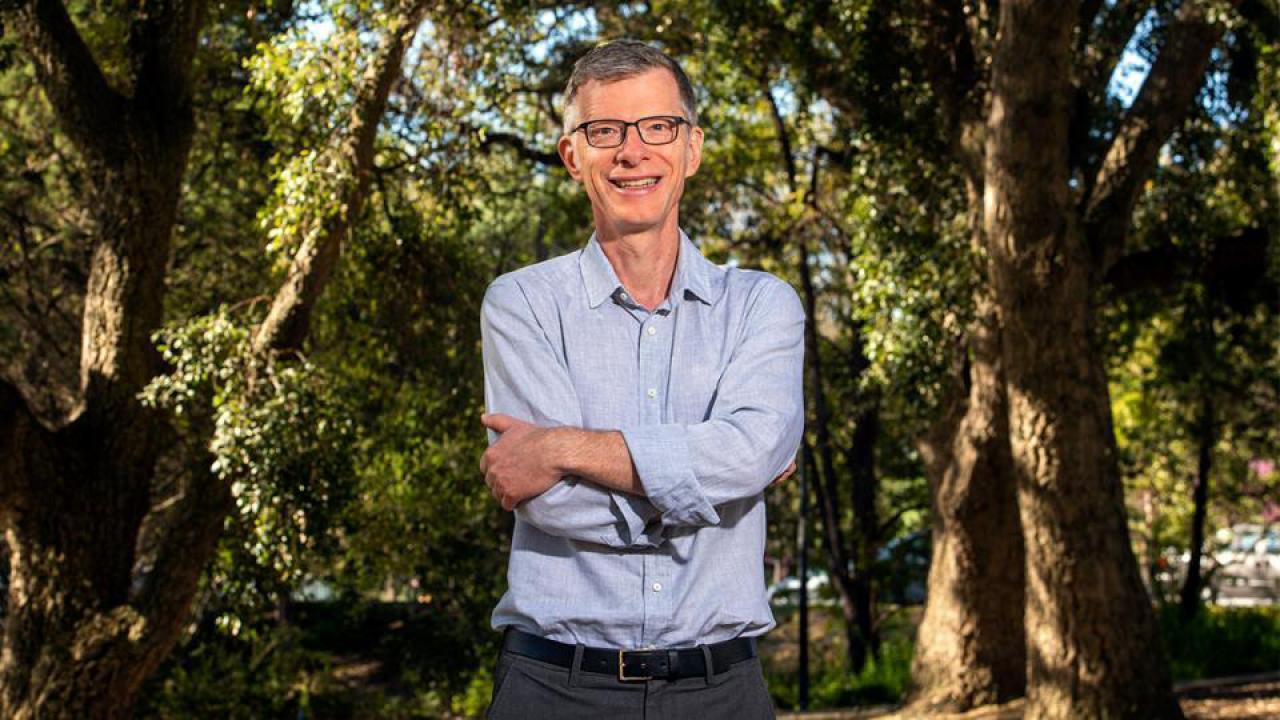
Aggie Square's Social Impact
By John Marx
Aggie Square has the potential to make a powerful social impact. And as summer turns to fall, the Aggie Square team is busy working with our UC Davis colleagues to lay the foundation for community-facing initiatives at our Sacramento innovation campus.
A lot of faculty and staff members in schools and colleges across both of our campuses can take credit for moving us forward on the community engagement front. This is not the place to list them one by one, but suffice it to say everyone from the Office of Diversity, Equity, and Inclusion to our development partner Wexford Scientific and Technology is asking how our university can better help the neighborhoods surrounding the Sacramento campus.
Along the way, it’s becoming clear to us that the urban-serving aspect of our university’s land grant mission has the potential to profoundly shape what faculty do every day.
We see possibilities for bolstering connections between faculty and community partners, new learning opportunities for our civic-minded students, chances to amplify what the National Science Foundation calls the “broader impacts” of our research, and myriad ways for Aggie Square to make a positive difference in the lives of people in neighborhoods around our campus.
We’re not alone among research universities in discussing the social impact of what we do, of course. In the context of the COVID-19 pandemic and in the wake of the murder of George Floyd, colleges and universities around the U.S. are asking how they can better support equitable and inclusive local development.
A recent Coalition of Urban and Metropolitan Universities (CUMU) event featured leaders talking about the complementary relationship between diversity initiatives on campuses and “anchor institutional” activities — like hiring from local communities and purchasing from local companies.
We want Aggie Square to help clarify the beneficial connection between what we do on campus and how we show up as an institution beyond our campus. Our university is a regional “anchor” whose future is intertwined with the health and well-being of the communities that surround it.
In some sense, this relationship is well-recognized. UC Davis is by its very nature a major economic force whose ability to provide jobs and to pay for local services and resources is crucial to regional economic well-being. And, in fact, there’s a new report out showing the potential economic impact of Aggie Square.
But the term “anchor institution” is also aspirational: large institutions like UC Davis have choices about who they hire, who they buy from, and how they collaborate with external partners that dictate where their economic and social impact is most felt.
Changing habitual practices of hiring and purchasing were the keys for Rush University Medical Center to start doing more for its neighbors on Chicago’s near west side. The five strategies laid out in the Rush University Anchor Mission Playbook are:
▪ Hire locally and create sustainable career pathways for entry level employees
▪ Utilize local labor for capital projects
▪ Buy and source locally
▪ Invest locally
▪ Volunteer and support community-building
The University of Pennsylvania's Anchor Institution Toolkit recommends that when it comes to strengthening local neighborhoods, universities should build upon what they already do well.
That’s a lesson we’re trying to follow at Aggie Square as we convene (for now, virtual) faculty and staff gatherings. Let me give you just one example of how we’re working.
During the early summer, I joined leaders from the School of Education to convene working groups devoted to asking whether we could make an impact by building on our university’s strength in researching, teaching, and engaging communities around food and health.
Participants in these working groups — who came together from five UC Davis colleges and schools — quickly identified the necessary first step of consulting with community stakeholders to make sure we know what they want and need. It is, to be sure, a familiar mistake for universities to presume they know what communities want ahead of time. We also needed to map out what UC Davis has done before, since it probably goes without saying that our strength in agriculture means we’ve been working on food and health for a long while.
The Alice Waters Institute at Aggie Square provides the opportunity to figure out how to build on those strengths, work with community partners and focus our impact. To do better for neighbors, we need a better understanding of who is doing what across our vast university.
Lo and behold, we found in our very working group a partnership that perfectly demonstrates how we make an impact by playing to our strengths and bringing together faculty and staff. On the staff side of this partnership was Santana Diaz, the James Beard Award winning Executive Chef on our Sacramento campus whose kitchens support local, sustainable growers. On the faculty side were Dr. Fred Myers and Ronit Ridberg from the Center for Precision Medicine.
We’d be wrong, this collaboration reminds us, to think of faculty research as disconnected from university operations like hiring and purchasing. They can work together to make us a better neighbor.
Our not-so-modest aim is for Aggie Square to push the envelope on this sort of collaboration. We want to help faculty and staff help the Sacramento neighborhoods around our health campus. We can all emerge stronger in the pandemic’s wake.
— John Marx is the Faculty Adviser to the Provost — Academic Planning, Aggie Square.
